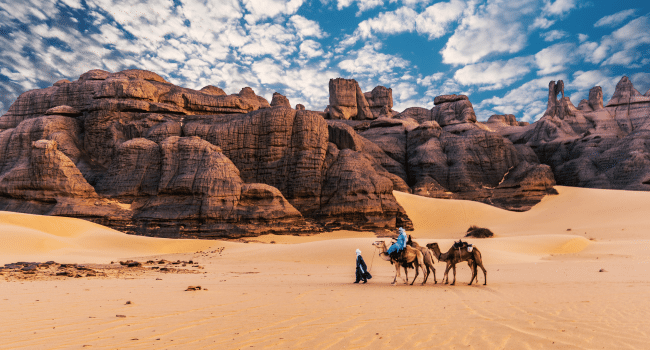Table of Contents
For photographers, the desert provides a special canvas with countless opportunities. From great, golden dunes to jagged rock formations and bizarre textures, the desert’s austere beauty inspires invention and exploration. Dramatic compositions find a stage in the changing light and wide heavens where simplicity meets amazing size. But distilling the core of this setting calls for more than a point-of- view perspective.
1. Embrace the Golden Hours
Desert scenes change in the gentle, golden light of morning and evening. The strong shadows of noon vanish during these hours, giving way to a pleasant glow that accentuates the sand’s and rocks’ inherent hues. Early morning light highlights the smooth curves and ripples of the dunes, hence adding a softness that accentuates their minute features. Sunrise shooting not only catches the peace of the desert but also shows the complex designs produced by time and wind.
2. Use Leading Lines to Guide
Natural lines abound in desert settings that could guide the observer’s attention across the frame and provide interesting compositions. Search for paths made by dunes, dry riverbeds, or the fractured patterns of a salt flat. These lines focus the observer toward a point of interest or into the expanse of the area, therefore highlighting the image. While the jagged lines of rocks make a stark contrast, the gentle, flowing lines of dunes lend movement. Emphasize these lines using perspective. Lower your viewpoint to accentuate the forms and create the sense of unceasing stretches.
3. Play with Shadows
In desert photography, shadows are very important as they provide your photographs with depth, contrast, and mystery. Bright shadows created by the bright sunshine accentuate the undulating surfaces of dunes or the rocky outcrop textures over the terrain. Make use of these shadows to capture the interaction of light and darkness, defining the nature of the desert. To highlight the features of the terrain and add drama, position yourself to catch lengthy shadows spanning the frame. Focusing on shadows lets you produce beautiful, high-contrast pictures. The great contrasts between light and dark parts may turn an ordinary sight into something aesthetically striking.
4. Capture the Unique Textures
From the coarse surfaces of rocks and cacti to the tiny grains of sand, the desert is a terrain of textures. Emphasizing these elements in your pictures will help the observer appreciate the character of the surroundings and have the impression of being able to touch the subject. Get close to catching the delicate lines of a fractured mudflat or the soft patterns created by windblown sand. These little details provide context and intrigue, thereby narrating the terrible yet beautiful conditions of the desert. Photographs taken in the slanted light of dawn or dusk accentuate textures as well. The low sun creates shadows across the smallest valleys and hills, thereby enhancing the texture.
5. Incorporate the Sky
Desert photography depends much on the wide, open sky, which gives your photographs context and size. Against the earthy tones of the desert below, a brilliant, clear sky might convey an infinite distance. Including a lot of the sky in your work highlights the solitude of the desert and helps your subject seem little, therefore stressing its wide-open character. When photographing a lone cactus or an isolated rock formation against a blue sky, this approach performs very nicely. In desert settings, cloud formations add their drama; they throw changing shadows over the terrain and dynamically interact with light and shadow.
6. Experiment with Minimalism
The simplicity and desolation of the desert fit really nicely for minimalist photography. Fewer things cluttering the frame will let you concentrate on the beauty of a solitary dune, the curvature of a rock, or the shadow of a far-off tree. This method helps you to portray the tranquil isolation and expanse of the desert, therefore producing beautiful and peaceful pictures. Search for basic, bold forms that contrast with the backdrop, then employ negative space to accentuate them. Usually, with a single topic set against a simple, uncluttered background, a minimalist style stresses clean lines and striking forms. Capturing the vastness of the desert, this style may inspire tranquility and solitude.
Conclusion
A one-of-a-kind chance to shoot a scene unlike any other is presented by desert photography. The desert inspires you to develop your imagination and push the boundaries of your photography with its large, open areas, complex textures, and always-shifting light. Emphasizing lighting, composition, texture, and scale can help you produce amazing pictures that really reflect the spirit of this captivating area.
